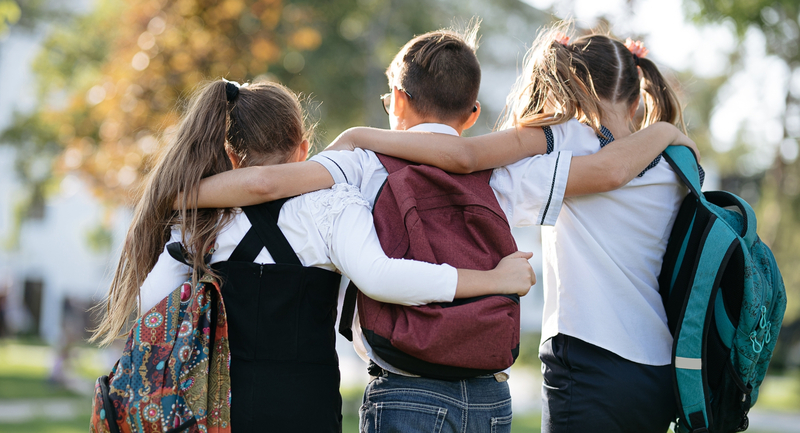In the wake of last summer’s renewed reckoning with racialized police violence and systemic racism, a wave of school policing reform swept the country. This wave is the result of decades of student- and community-led organizing. Mounting evidence demonstrates that school police, instead of keeping students safe, often increase traumatizing disciplinary practices and reinforce the school-to-prison pipeline. Black and brown students who attend schools staffed with School Resource Officers (SROs) are at increased risk of being arrested—even for low-level offenses—and have lower likelihood of graduating or enrolling in college.
Since June of last year, more than 20 districts across the country, including Minneapolis, Oakland, Denver, D.C., Portland, and Phoenix, have terminated their contracts with local police. Others have undertaken substantial changes to school policing policies. For example, Los Angeles Unified School district cut a third of its school police officers and adopted a plan that funnels $11.5 million to initiatives that support Black students’ success.
Nationwide, the Movement for Black Lives (M4BL) has issued calls for the removal of school police officers as a prominent part of their Vision for Black Lives policy platform. The #PoliceFreeSchools movement has also captured the attention of the United States Congress, where the Counseling Not Criminalization in Schools Act was introduced last July to the Senate Committee on Health, Education, Labor, and Pensions. The bill proposes redirecting federal funding for school police to a grant program supporting social-emotional support services and programs for students. Several state legislatures, including Maryland and Vermont, are also considering bills that would prohibit schools from contracting with police.
A Movement for Change
A range of policy actions—from school board decisions to federal legislation—are key to making schools safer and more equitable for students. Largely missing from this conversation, though, is a detailed plan for how schools should move from policy mandate to sustainable change.
This gap notably surfaced in my recent work: As part of my doctoral research, I spent the first six months of 2017 inside two urban high schools in Massachusetts, studying how they implemented a relatively new law that restricted the use of suspension and expulsion. Absent the resources and guidance to reinvent their disciplinary practices, these two schools—and schools across the state—maintained the status quo. Young people who violated school rules were still sent home, but suspensions went undocumented to maintain the appearance of compliance with the new law.
As countless districts grapple with decisions about whether and how to involve police in schools, administrators and educators charged with enacting reform still lack ready access to the models and supports they need for the cultural transformation that #PoliceFreeSchools demands and that young people deserve. We need a way to talk–and listen–and ultimately co-construct an approach to school safety that affirms, rather than criminalizes, the identities of BIPOC youth. We must challenge systemwide and centuries-old reliance on surveillance and domination as a means of establishing order in American public schools.
For the #PoliceFreeSchools movement to transform school safety, we need more than activism and policy change. My nonprofit organization, Education Development Center, with colleagues at Frameworks Institute, is in the early stages of launching an action collaborative that facilitates youth and community engagement in the data-driven implementation of school policing reform. Though each school district needs to reimagine school safety based on its own history and context, local systemic change requires:
- The activation of youth leadership and community power;
- The collection and translation of early evidence of promising practices, making it possible for school leaders to sustain new choices; and
- The deliberate use of stories and research that encourage diverse, nationwide engagement with school policing reform.
The following three steps are a strong start to making schools safer and more equitable for all students:
1. Center Planning on Real Community Needs
Schools’ decisions about resource reallocation, program adoption, and policy must involve students and community members as partners and decision makers. It is vital to move beyond typical formats, where community voice is perfunctory and district and school administrators retain power. A more democratic approach grounds deliberation in data and distributes decision-making power among all stakeholders. For instance, participatory budgeting can engage a broad coalition in deciding how money diverted from police budgets can be reallocated to support the cultivation of safe and affirming schools. One high school in Rochester, New York, established decision-making committees that include students and family members as full-voting participants, and requires full participation of voting members before decisions are adopted.
2. Engage Students in Gathering Evidence
Youth- and community-led organizations like Minneapolis’s Black Liberation Project, the Black Organizing Project in Oakland, and Padres y Jóvenes Unidos in Denver precipitated the present wave of policy change. If the next phase is to remain faithful to their calls for racial justice and liberatory education, young people must play an active role not only in designing schools’ plans, but in monitoring their implementation.
For example, the evaluation of a school’s initiative should engage students and families as data collectors. In 2016, The New Settlement Action Committee in New York took a participatory action approach to better understand the ways school climate led to student pushout. Youth- and community-led data collectors who evaluate the implementation of school policing reform could similarly gather data on students’ experiences and perceptions of new school safety infrastructures to reveal both successes and unintended consequences. As I found in my earlier research, administrative data can obscure important patterns when the individuals reporting it face pressures to demonstrate strong performance or legal compliance. Student- and community-led data collection provides an honest window into progress and pitfalls as the struggle for change moves from the policy arena to schools’ hallways.
3. Draw on Data to Identify Levers of Change
Data collected by students must be part of a broader evidence-building initiative that aims to understand how specific implementation and communication strategies drive transformation. Present calls for more counselors, mental health workers, and the widespread deployment of restorative practices inside schools are compelling, but our collective understanding of how to transform a culture of control into a culture of justice and liberation is particularly weak.
Research suggests that restorative justice programs in schools may be an effective way to cultivate positive school climate and reduce exclusionary discipline—but only when they are embedded in the culture of the school, financially supported, and afforded the time to be fully implemented. In this way, communities and school leaders must leverage both research and ongoing implementation support to ensure that school policing reform yields the desired outcomes.
Linking information about schools’ personnel, systems, and programs to perceptions of change and student outcomes—such as school-based arrest, grade retention, and dropping out—can help educators and stakeholders identify the interventions and implementation strategies that produce the strongest gains for students and schools and course correct as needed. Aggregated data from individual schools may identify particularly effective approaches, informing roadmaps for other schools’ planning and implementation decisions.
Minneapolis, Oakland, and Los Angeles are at varying stages of replacing school police with school climate coaches, safety specialists, and peacemakers, but the effectiveness of this strategy is both contingent upon the training and background of these new personnel (Minneapolis has been accused of replacing police with police by another name), and remains unproven by research. A nationwide effort to track and evaluate the conditions and impacts of specific approaches to reimagining school safety is integral to converting policy change into lasting reform.
Where to Next? Envisioning an Action Collaborative
Approaches to school policing reform represent a dramatic shift in culture, relationships, and procedure for many schools. Integrating deep community engagement, commitment to evidence, and openness to organizational learning is necessary if schools want to achieve the emancipatory objectives of the #PoliceFreeSchools movement. Together, we can build schools that are safe and equitable.








